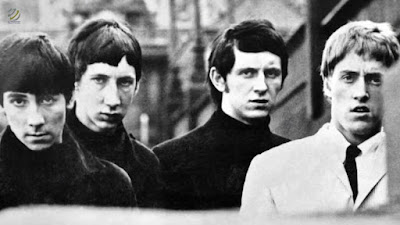Escrita por
Leonard Cohen, foi gravada em New York City, nos estúdios da
Columbia Records. Foi lançada no disco de estréia dele, Songs of
Leonard Cohen, em 1967. Inicialmente foi lançada como poema em 1966
e quando se tornou canção ainda em 1966, foi gravada por Judy
Collins. Pitchfork Media colcou-a como número 31 da maiores canções
dos anos 60s.
Foi
inspirado pelo amor platônico que Cohen sentia por Suzanne Verdal, a
então namorada do escultor Armand Vaillanbcourt. Na letra, ele fala
dos rituais que ocorreram quando eles se encontraram. Suzanne
convidou-o pra visitá-la no apartamento dela perto do Velho Porto em
Montréal, onde ela serviu chá e eles saíam pra andar no Velho
Montréal, passando pela Igreja de Notre-Dame-de-Bon-Secours, onde os
marinheiros eram abençoados antes de irem pro mar.
Em uma
entrevista a CBC News em 2006, Suzanne disse que ela nunca teve
relações sexuais com Cohen, apensar de algumas interpretações da
canção acharem. Cohen disse que apenas imaginou tendo relações
com ela.
Ela disse
que encontrou com Cohen duas vezes depois da canção ter sido
lançada. Uma nos anos 70, após um show dele e outra nos anos 90,
quando ela dançou pra ele num show, mas ele não falou com ela, ela
acredita que porque não a reconheceu.
Foi
regravada também por Nina Simone em 1969.
A letra:
Suzanne takes
you down to her place near the river
You can hear the boats go by
You can spend the night beside her
And you know that she's half crazy
But that's why you want to be there
And she feeds you tea and oranges
That come all the way from China
And just when you mean to tell her
That you have no love to give her
Then she gets you on her wavelength
And she lets the river answer
That you've always been her lover
And you want to travel with her
And you want to travel blind
And you know that she will trust you
For you've touched her perfect body with your mind.
And Jesus was a sailor
When he walked upon the water
And he spent a long time watching
From his lonely wooden tower
And when he knew for certain
Only drowning men could see him
He said "All men will be sailors then
Until the sea shall free them"
But he himself was broken
Long before the sky would open
Forsaken, almost human
He sank beneath your wisdom like a stone
And you want to travel with him
And you want to travel blind
And you think maybe you'll trust him
For he's touched your perfect body with his mind.
Now Suzanne takes your hand
And she leads you to the river
She is wearing rags and feathers
From Salvation Army counters
And the sun pours down like honey
On our lady of the harbour
And she shows you where to look
Among the garbage and the flowers
There are heroes in the seaweed
There are children in the morning
They are leaning out for love
And they will lean that way forever
While Suzanne holds the mirror
And you want to travel with her
And you want to travel blind
And you know that you can trust her
For she's touched your perfect body with her mind.
You can hear the boats go by
You can spend the night beside her
And you know that she's half crazy
But that's why you want to be there
And she feeds you tea and oranges
That come all the way from China
And just when you mean to tell her
That you have no love to give her
Then she gets you on her wavelength
And she lets the river answer
That you've always been her lover
And you want to travel with her
And you want to travel blind
And you know that she will trust you
For you've touched her perfect body with your mind.
And Jesus was a sailor
When he walked upon the water
And he spent a long time watching
From his lonely wooden tower
And when he knew for certain
Only drowning men could see him
He said "All men will be sailors then
Until the sea shall free them"
But he himself was broken
Long before the sky would open
Forsaken, almost human
He sank beneath your wisdom like a stone
And you want to travel with him
And you want to travel blind
And you think maybe you'll trust him
For he's touched your perfect body with his mind.
Now Suzanne takes your hand
And she leads you to the river
She is wearing rags and feathers
From Salvation Army counters
And the sun pours down like honey
On our lady of the harbour
And she shows you where to look
Among the garbage and the flowers
There are heroes in the seaweed
There are children in the morning
They are leaning out for love
And they will lean that way forever
While Suzanne holds the mirror
And you want to travel with her
And you want to travel blind
And you know that you can trust her
For she's touched your perfect body with her mind.
A versão de
Leonard Cohen ao vivo em 1970 na Isle of Wight:
A versão de
Leonard Cohen com Judy Collins em 1976:
A versão de
Coldplay:























